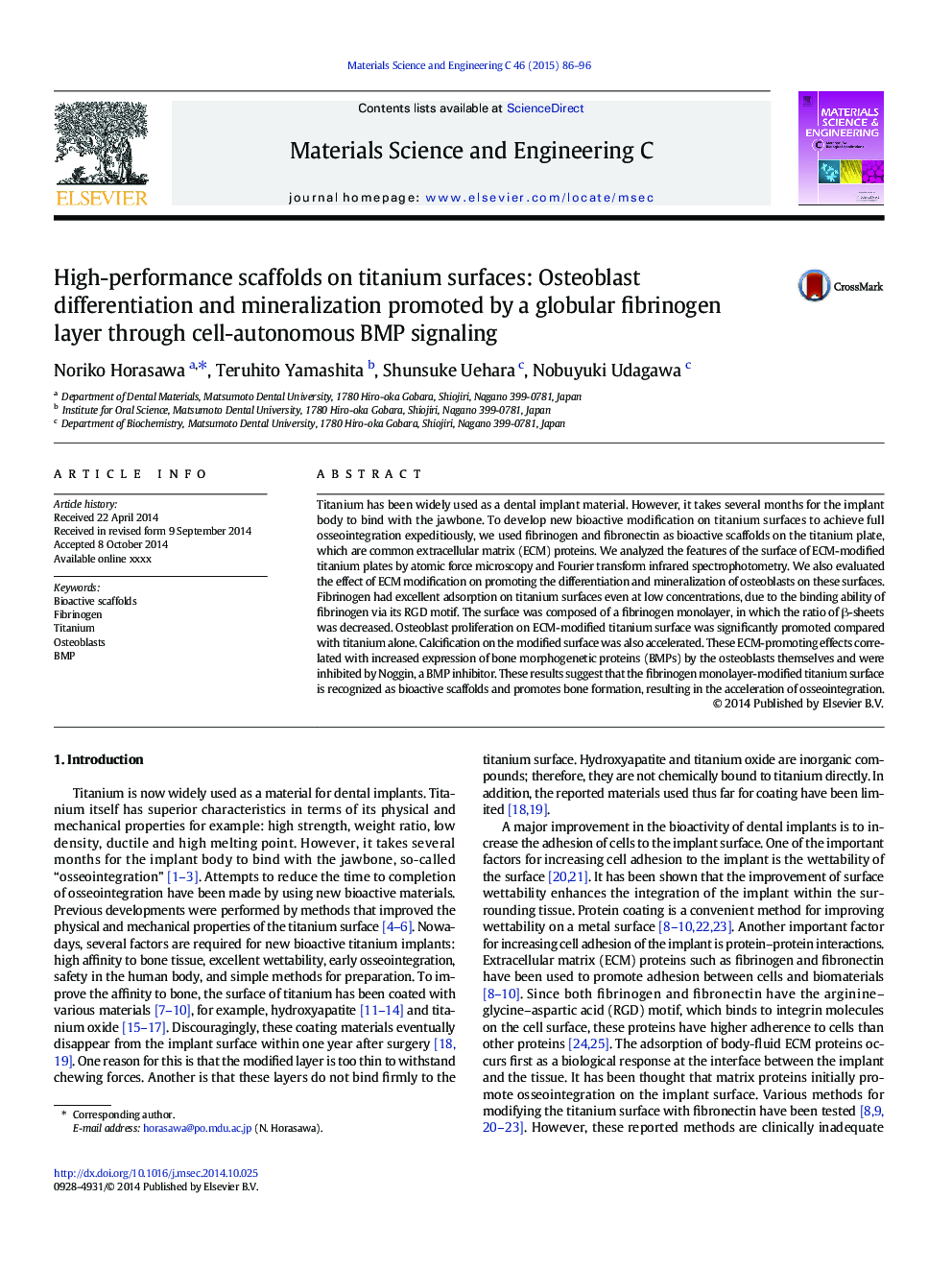| Article ID | Journal | Published Year | Pages | File Type |
|---|---|---|---|---|
| 7869784 | Materials Science and Engineering: C | 2015 | 11 Pages |
Abstract
Titanium has been widely used as a dental implant material. However, it takes several months for the implant body to bind with the jawbone. To develop new bioactive modification on titanium surfaces to achieve full osseointegration expeditiously, we used fibrinogen and fibronectin as bioactive scaffolds on the titanium plate, which are common extracellular matrix (ECM) proteins. We analyzed the features of the surface of ECM-modified titanium plates by atomic force microscopy and Fourier transform infrared spectrophotometry. We also evaluated the effect of ECM modification on promoting the differentiation and mineralization of osteoblasts on these surfaces. Fibrinogen had excellent adsorption on titanium surfaces even at low concentrations, due to the binding ability of fibrinogen via its RGD motif. The surface was composed of a fibrinogen monolayer, in which the ratio of β-sheets was decreased. Osteoblast proliferation on ECM-modified titanium surface was significantly promoted compared with titanium alone. Calcification on the modified surface was also accelerated. These ECM-promoting effects correlated with increased expression of bone morphogenetic proteins (BMPs) by the osteoblasts themselves and were inhibited by Noggin, a BMP inhibitor. These results suggest that the fibrinogen monolayer-modified titanium surface is recognized as bioactive scaffolds and promotes bone formation, resulting in the acceleration of osseointegration.
Related Topics
Physical Sciences and Engineering
Materials Science
Biomaterials
Authors
Noriko Horasawa, Teruhito Yamashita, Shunsuke Uehara, Nobuyuki Udagawa,
